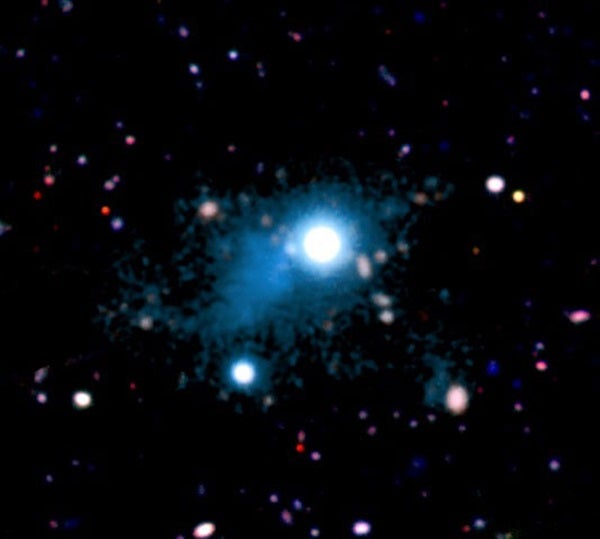A giant cosmic web of invisible gas weaves throughout the universe, providing the scaffolding out of which galaxies were born. Before now, however, the only way to see this web was indirectly, in a few select regions where a bright backlight happens to be situated behind the gas. These backlights are quasars — light from infalling matter around the supermassive black hole at a center of a galaxy. But such superpositions are rare and only provide a limited view of this vast, cosmos-spanning structure.
Now, astronomers eager to study this cosmic webbing have a new method that avoids the need for chance alignments. For 140 hours, they focused the European Southern Observatory’s Very Large Telescope on a section of the Hubble Ultra Deep Field — the deepest view of the universe ever captured. With the help of the Multi Unit Spectroscopic Explorer (MUSE), they were able to directly capture the light from the cool hydrogen gas of cosmic filaments just 1 to 2 billion years after the Big Bang. The filament they imaged extends over 15 million light-years, or some 150 Milky Ways placed side by side.
And its light hid a further surprise: It comes from the new stars in billions of dwarf galaxies never before seen in the early universe. Accounting for these numerous small galaxies will be an important test of the way astronomers believe galaxies form and grow over time.










